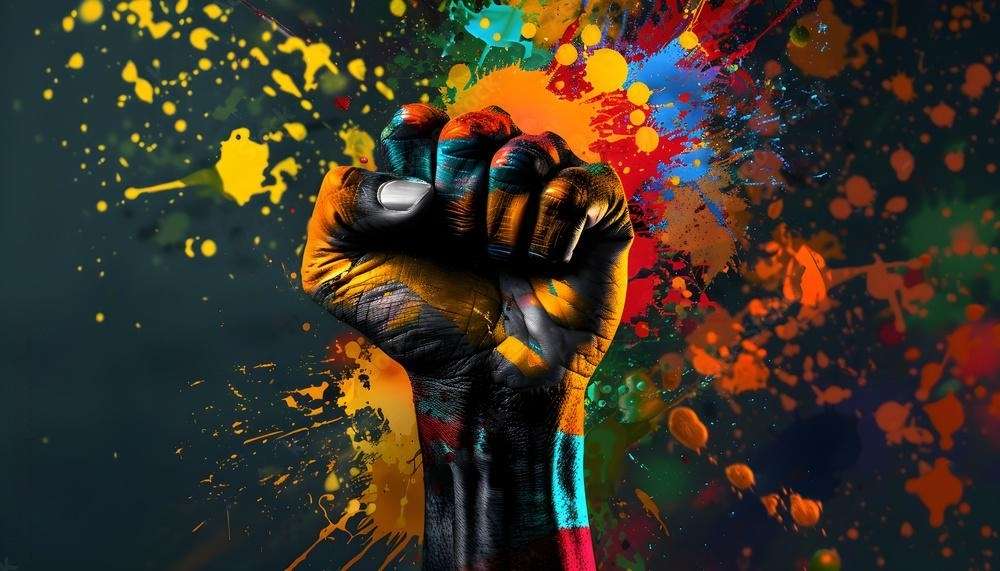
James Baldwin once said, ‘Not everything that is faced can be changed, but nothing can be changed until it is faced.’ As a Black, Disabled person, these words resonate deeply with me because the intersecting challenges of ableism and racism are often left unaddressed. If we don’t confront them, how can we expect real change?
In conversations around disability, we often focus on the physical, structural, and social barriers that disabled people face. But for many people of color with disabilities, there’s an additional layer of difficulty that isn’t always discussed: navigating both ableism and racism simultaneously.
These two forms of discrimination don’t exist in isolation—they intersect and amplify each other, creating unique challenges for disabled people of color. While ableism seeks to marginalize people based on their disabilities, racism adds another layer of exclusion, making it difficult for individuals to find spaces where they feel fully seen and supported.
I have personally felt the weight of both racism and ableism in various aspects of my life. There have been countless times when I didn’t feel “Black enough” for one space or felt “too disabled” for another. I’ve even been told that I wasn’t disabled enough to qualify for services, which made me feel invisible in the very systems that are supposed to support individuals like me.
Navigating healthcare as a person of color with a disability can be particularly challenging. Medical professionals may overlook my concerns because of implicit biases related to both my race and disability. This means that my experience is not always taken seriously, and sometimes, I’ve had to fight for the care that I deserve.
Additionally, the mental health challenges faced by people of color with disabilities are often compounded by both racism and ableism. According to recent data, Black individuals with disabilities are 20% more likely to experience serious mental health issues, such as major depressive disorder or generalized anxiety disorder, compared to their white counterparts. However, the lack of culturally competent care and the stigma surrounding mental health in communities of color often mean that these issues go unaddressed. This results in greater feelings of invisibility and neglect in systems that are supposed to support us.
Similarly, advocacy spaces often overlook the intersection of race and disability. When racism is left out of the conversation, the voices of disabled people of color like myself are erased, leaving us unsupported. Advocacy that only focuses on ableism without considering race doesn’t fully address the barriers we face.
And it’s not just professional or healthcare settings where these challenges arise—community spaces can be isolating as well. I have felt out of place in both disability and Black communities. Racial biases within the disability community make it hard for people like me to feel fully included. On the flip side, some racial or cultural communities may not fully understand or accommodate the needs of their disabled members, further alienating those of us who live at the intersection of race and disability.
As the upcoming election draws near, I’ve become even more aware of how deeply these intersecting issues affect me, and many others, in every aspect of life. The policies we vote for directly impact our healthcare, the services we rely on, and the way we are treated in society. The intersection of ableism and racism is often overlooked in political conversations, and it’s critical that we fight for candidates and policies that acknowledge and address these dual barriers.
The first step toward real change is recognizing how ableism and racism intersect, and addressing both simultaneously. We must create inclusive environments where disabled people of color are seen and supported in all aspects of their identity. This means dismantling systems that ignore the intersectionality of these experiences, whether it’s healthcare, advocacy, or community spaces. We can’t address one form of discrimination without acknowledging the other—our systems need to be rebuilt to value all parts of who we are.
I’d love to hear your thoughts—have you experienced these intersecting challenges, or have you noticed them in your community? How can we work together to ensure that everyone is seen and supported in all of their identities? Join the conversation in the comments, or feel free to share your experiences.


